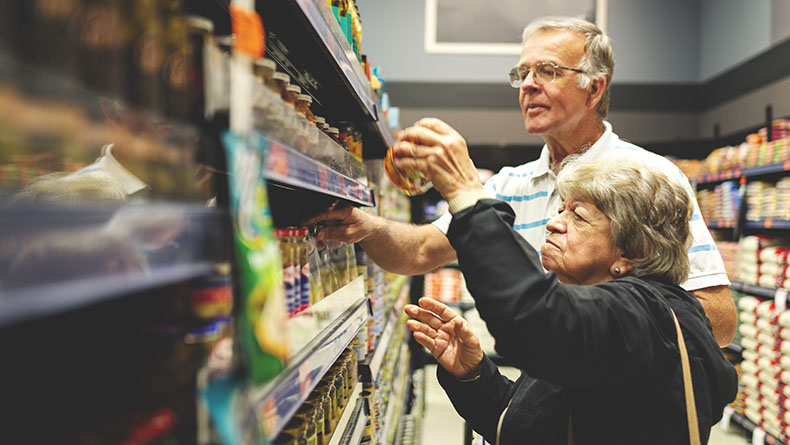AARP Hearing Center
SNAP’s Eligible but Unenrolled: Improving Access for Older Adults
By Olivia Dean, September 13, 2022 02:03 PM

On September 28, the White House Conference on Hunger, Nutrition, and Health will unveil a national strategy to accelerate progress towards ending hunger and improving nutrition in this country. Share your stories, experiences, and ideas with the Administration ahead of the conference here.
“With today’s inflation, every little bit helps.”
It’s the kind of statement people are probably uttering a lot these days, but in this case the source of the comment is Greg (not his real name), [1] a 55-year-old participant in the Supplemental Nutrition Assistance Program (SNAP). And the “every little bit” he’s referring to is the monthly support he receives from SNAP to help put food on his table.
As our nation’s largest anti-hunger program, SNAP helps millions of eligible low-income people like Greg – including 8.7 million households with adults 50 and older – buy the food they need. It’s especially important alongside rising food prices, which are hitting low-income people hardest.
But the AARP Public Policy Institute’s (PPI) latest research with Mathematica finds that despite the need, many eligible older adults are not enrolled in SNAP. In 2018, an estimated 16 million (or 63 percent of) adults ages 50 and older who were eligible for the program did not participate. Those ages 60 and older had especially low levels of participation, with only 29 percent of those eligible actually participating. So “with today’s inflation,” to use Greg’s phrasing, it’s as important as ever to make sure the people who are eligible for SNAP are getting it.
Previous research has pointed to many reasons for low participation among older adults in SNAP, including perceived stigma associated with using the federal support, a confusing and burdensome application process, and lack of awareness about the program. There’s also a perception that SNAP benefits are too small to make it worth the effort of applying. And there’s something to be said for that: Our research also found that two-thirds of eligible nonparticipants ages 50 and older were in households that would be eligible only for the minimum benefit ($15 a month in 2018). However, one in five – over 3.2 million – would be eligible for more than $200 a month. The fact that so many eligible older adults are missing out on substantial benefits could indicate that some are either unaware of the significant benefit they would receive or face barriers that make it challenging to participate (e.g., burdensome application process).
The good news is that certain policies could improve SNAP participation. Other PPI and Mathematica research found that broad-based categorical eligibility (BBCE) and Supplemental Security Income-Combined Application Projects (SSI-CAPs) – two policies aimed at making it easier for eligible people to enroll in SNAP and reducing administrative burden– were associated with higher SNAP participation among eligible older adults (see textbox). We also found a link between higher participation and longer certification periods (i.e., the window of time a household is enrolled before having to “recertify” to stay in the program), given that such longer periods can reduce rates of people cycling in and out of the program.
Our work indicates that federal and state policymakers interested in expanding SNAP participation have a number of options, and AARP recently shared our findings with the White House in advance of their upcoming Conference on Hunger, Nutrition and Health. For example, more states could implement BBCE, and those with narrower BBCE policies could consider expanding them (e.g. by raising the gross income limit). Extending certification periods for older adults at the state or federal levels could also improve participation. Efforts that support outreach and help people navigate the application process, especially focusing on people ages 60 and older and those with the lowest incomes, could help get food to those in greatest need. At the same time, policymakers could explore other innovative efforts to improve SNAP access, such as through data sharing and matching across public benefit programs.
SNAP is a critical but underused program among older adults. PPI and Mathematica’s research findings can help inform efforts – including the upcoming White House Conference on Hunger, Nutrition, and Health – to connect older adults to this important program.
[1] Quote from an AARP 2022 SNAP Under Enrollment survey respondent (conducted online May 2022).
































































